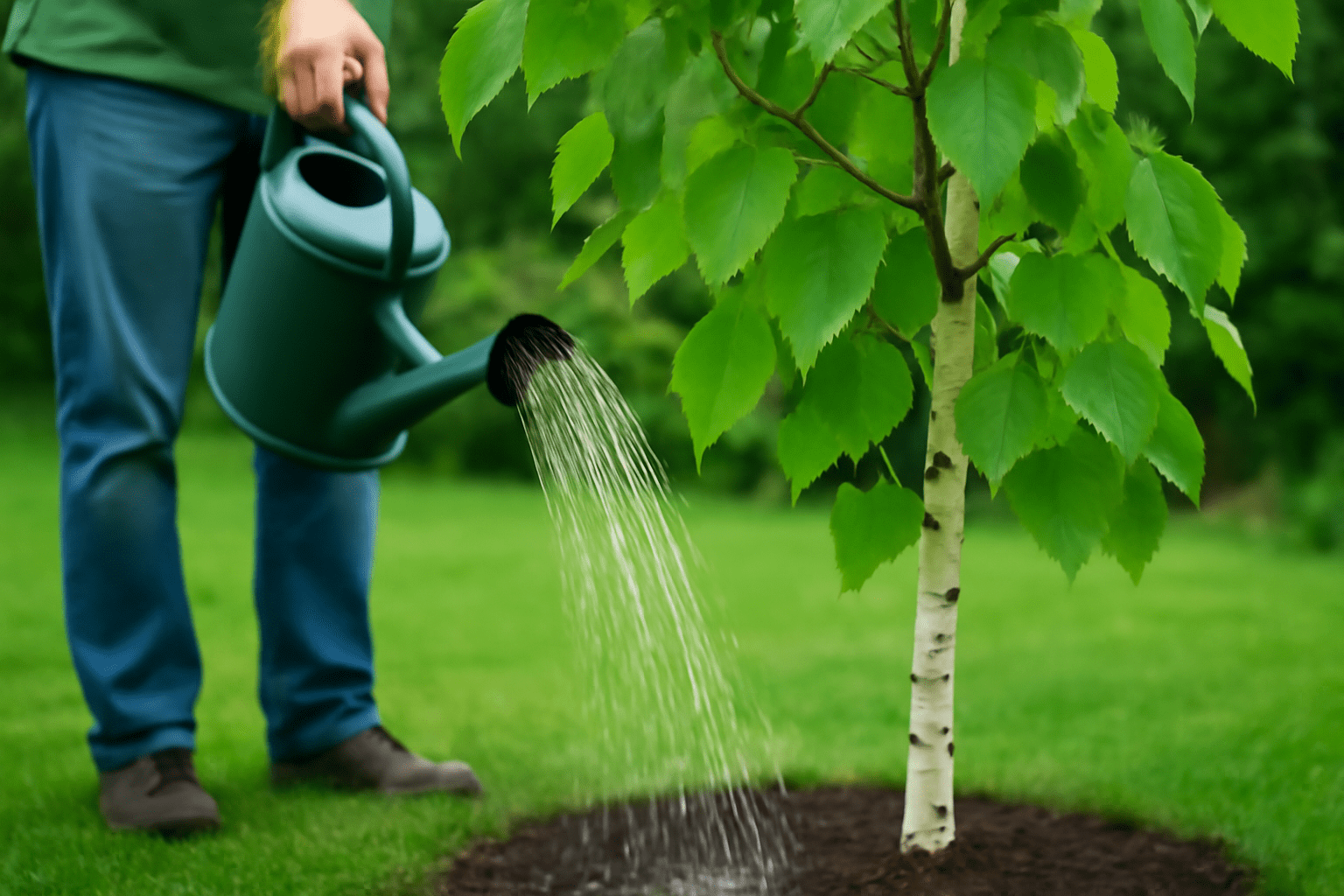
How to Identify and Care for Leaves on a Birch Tree: Essential Tips for Healthy Growth
Are you noticing something off with the leaves on a birch tree in your yard? 
In this article, we’ll walk you through everything you need to know to identify healthy birch leaves, troubleshoot common problems, and provide simple yet effective care tips. By the end, you’ll have the knowledge to ensure your birch tree thrives and its leaves remain lush and vibrant all year long. Ready to give your birch tree the attention it deserves? Keep reading to discover the essential steps for healthy growth!
Table of Contents
ToggleUnderstanding the Birch Tree and Its Leaves 

Birch trees are known for their elegant, white bark and delicate, oval-shaped leaves that flutter in the wind. These fast-growing trees thrive in a variety of environments, making them popular in both urban and rural settings. But to care for a birch tree properly, it’s essential to understand its leaves and their specific needs. Let’s break down how you can identify and care for the leaves on a birch tree, so your tree stays healthy and vibrant all year round.
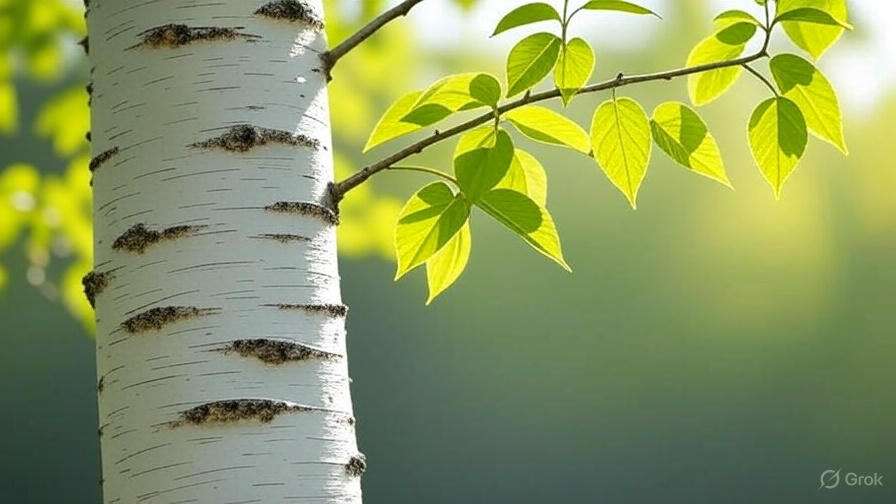
1. Identifying Birch Leaves
Birch tree leaves are easily recognizable by their unique shape and texture. They typically have:
- Shape: Oval or triangular, with pointed tips and serrated edges.
- Size: Generally 2-3 inches long, although size can vary depending on the species.
- Color: Light green in spring and summer, turning yellow in the fall.
- Veins: Birch leaves have a prominent, straight vein running through the center, with smaller veins branching out.
Knowing how to identify these leaves is the first step in determining what care your tree needs. If the leaves are turning yellow prematurely or showing signs of stress, it could indicate a problem that requires attention.
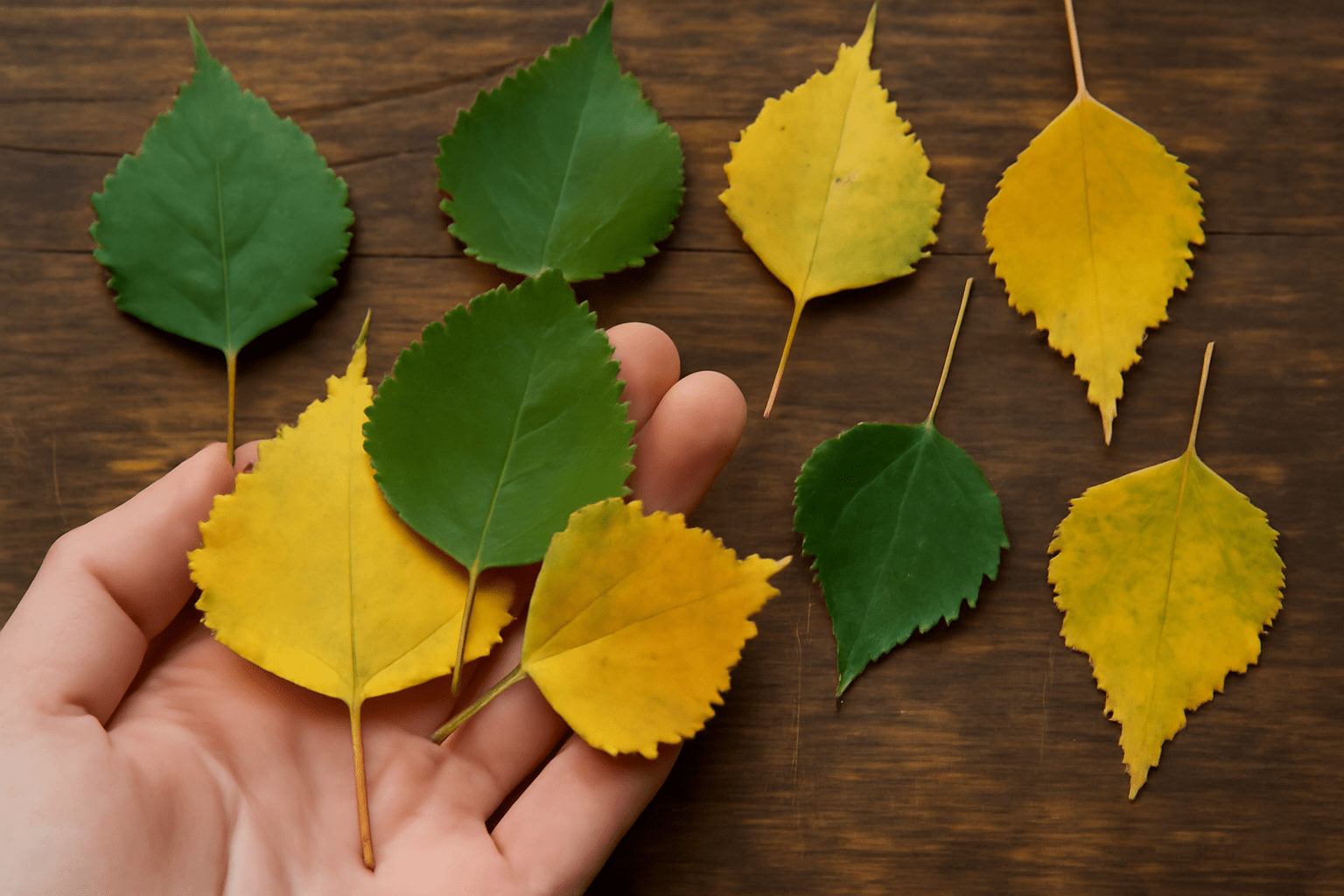
2. Common Birch Tree Varieties and Their Leaves
There are several species of birch trees, and each has slightly different leaf characteristics. The most common include:
- River Birch (Betula nigra): Leaves are smaller and have a more rounded shape with a deeper green hue.
- Silver Birch (Betula pendula): Known for its heart-shaped leaves, which are slightly larger and turn golden-yellow in autumn.
- Paper Birch (Betula papyrifera): Leaves are smaller, often with a more defined point at the tip.
Understanding which type of birch you have can help you identify any leaf-related issues more accurately.
3. What Healthy Birch Leaves Look Like
Healthy birch leaves should be vibrant green during the growing season, with no discoloration or spots. The edges should be smooth, not curled or jagged. If your birch tree’s leaves are healthy, you’re on the right track for a thriving tree. However, if you notice yellowing, wilting, or browning, it’s time to investigate potential problems.
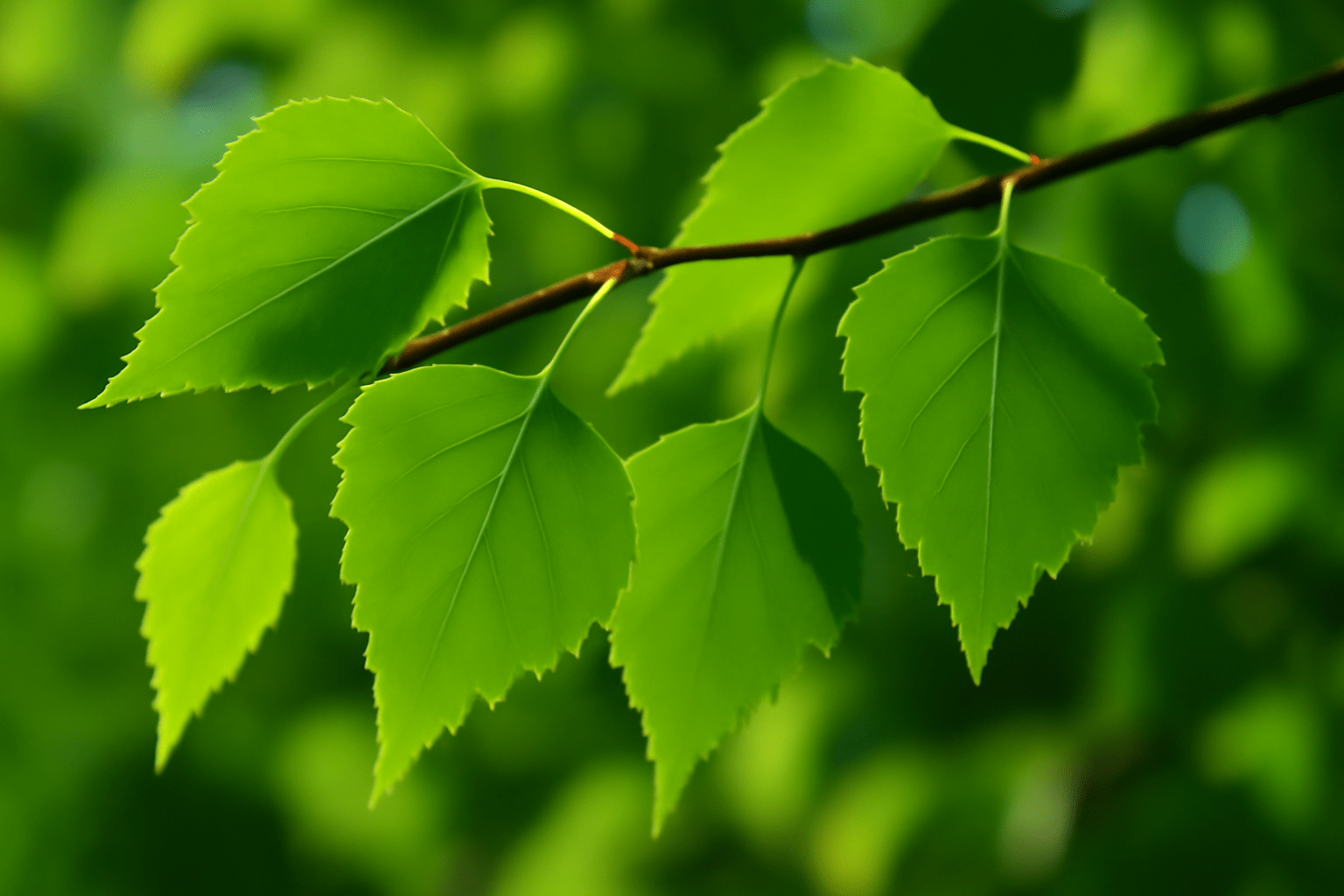
4. Common Problems with Birch Leaves
Birch leaves are susceptible to a few common issues, which can signal stress or illness in the tree:
- Yellowing Leaves: This could be a sign of nutrient deficiency (like nitrogen or iron) or poor soil drainage. It’s important to check the soil pH and ensure it’s not too acidic.
- Brown Spots or Edges: Often caused by fungal infections, such as leaf spot disease, or environmental stress like drought.
- Curling or Wilting Leaves: Could be a sign of pests like aphids or spider mites, or water stress (either too much or too little).
Addressing these issues early will help prevent them from harming your tree’s overall health.
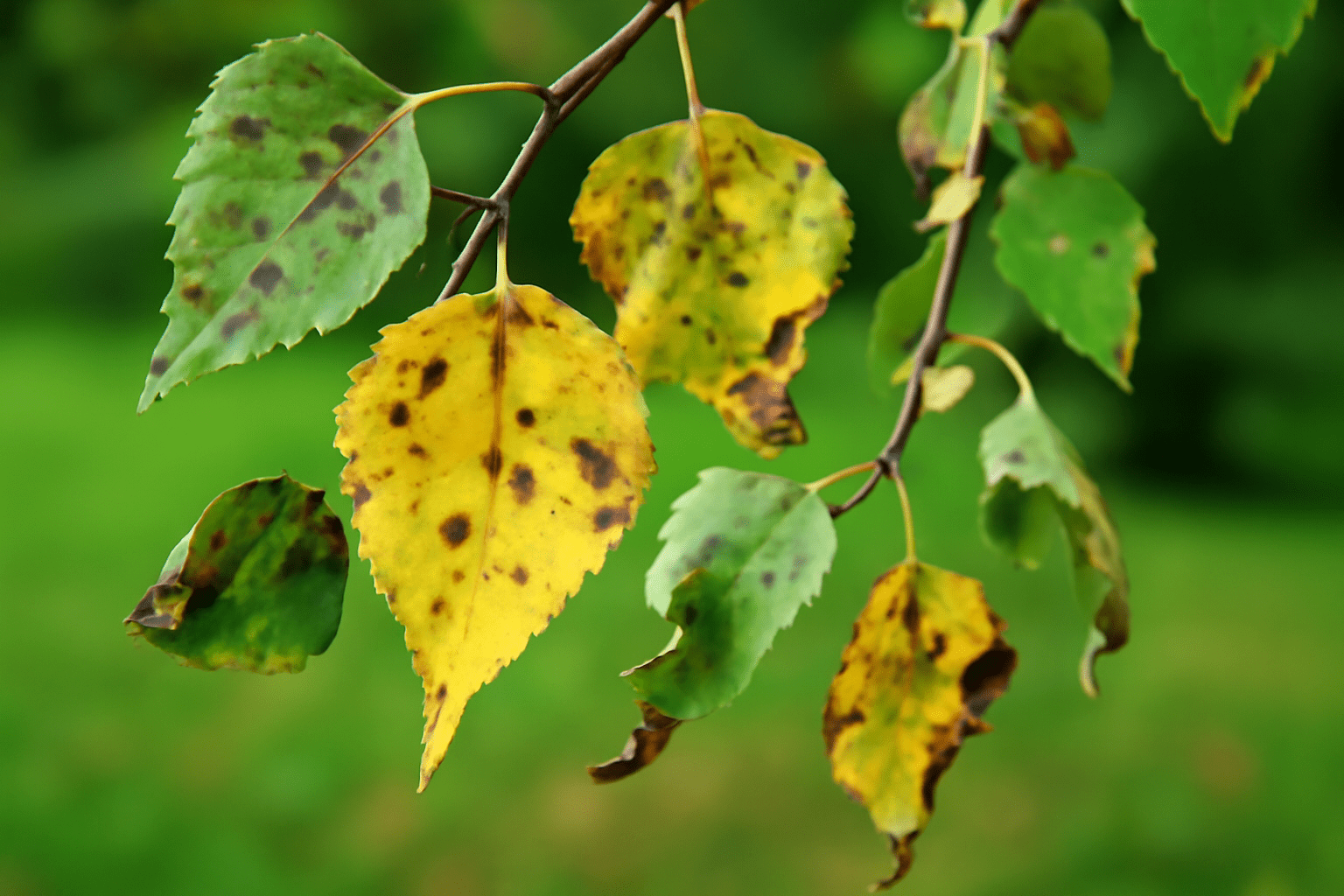
5. Caring for Birch Leaves
To ensure your birch tree’s leaves stay healthy:
- Watering: Birch trees like moist, well-drained soil. Ensure they’re getting adequate water, especially during dry periods.
- Fertilizing: Apply a balanced fertilizer in the spring to give your birch the nutrients it needs for optimal leaf growth.
- Pruning: Regularly prune dead or diseased branches to keep your tree healthy. This will help the tree direct energy to the healthy leaves.
- Pest Control: Keep an eye on your birch leaves for signs of pests. If you notice insects or damage, consider using organic treatments like neem oil.
6. Why Birch Leaves Matter for Tree Health
The leaves of a birch tree play a vital role in photosynthesis, which helps the tree produce the energy it needs to grow. Healthy leaves are essential for the overall well-being of the tree, contributing to its longevity and resilience. By keeping your birch’s leaves in good condition, you’re also helping to ensure that the tree will thrive for many years to come.
By understanding the birch tree’s leaves, their characteristics, and common problems, you can easily provide the care your tree needs to flourish. Keep your tree hydrated, nourished, and pest-free, and you’ll enjoy the beauty of its leaves throughout the seasons!
How to Identify Healthy Leaves on a Birch Tree 
Identifying healthy leaves on a birch tree is an essential skill for any gardener or tree enthusiast. Healthy leaves are vital to the overall well-being of your birch tree, as they are responsible for photosynthesis and providing the tree with the energy it needs to grow. Here’s how you can quickly and easily spot healthy birch leaves:

1. Color of the Leaves 
Healthy birch leaves typically have a vibrant, fresh green color. The leaves should appear lush and not yellowed or brown. A yellow or brown tint often indicates stress, such as from a nutrient deficiency, disease, or pest infestation. If the leaves are turning red or purple, it could also suggest environmental stressors like overexposure to sunlight or extreme temperatures.
2. Shape and Size of the Leaves 
Birch leaves have a characteristic oval or diamond shape with serrated edges. The leaves should be firm, smooth, and free from holes or spots. If you notice abnormal shapes, like curled edges or reduced size, the tree could be dealing with pest problems, such as aphids or leaf miners.
3. Texture and Surface of the Leaves 
Healthy birch leaves feel smooth and slightly waxy to the touch. When inspecting them, gently rub the leaf’s surface and check for a smooth texture. Leaves with a rough or dry texture may indicate fungal infections, dehydration, or environmental damage.
4. Absence of Spots or Holes 
Check for any dark spots, holes, or unusual markings. These could be signs of diseases like birch leaf spot, or a pest issue. A healthy leaf will be free from visible damage. If there are small holes, it’s usually an indicator of insects like caterpillars or beetles.
5. Veining and Symmetry 
A healthy birch leaf will have clear, well-defined veins running symmetrically. If the veins appear discolored or swollen, it might suggest a fungal infection or lack of nutrients. Healthy veins help in transporting water and nutrients throughout the leaf.
6. Leaves That Aren’t Wilting or Drooping 
Healthy birch leaves should stand upright or hang naturally. If the leaves are drooping or wilting, it could signal a problem with water stress or root issues. Ensure your birch tree has the right amount of water—too much or too little can damage the leaves.
What to Do If Your Birch Tree Has Unhealthy Leaves 
If you spot unhealthy leaves on your birch tree, don’t panic! Here are some steps to help:
- Water properly: Ensure the tree receives deep, consistent watering, but avoid waterlogging.
- Check for pests: Inspect the leaves for signs of insects and take appropriate action (like using organic pest control).
- Fertilize: If you suspect nutrient deficiencies, use a balanced fertilizer to support the tree’s health.
- Prune affected leaves: Remove any diseased or damaged leaves to prevent the spread of problems.
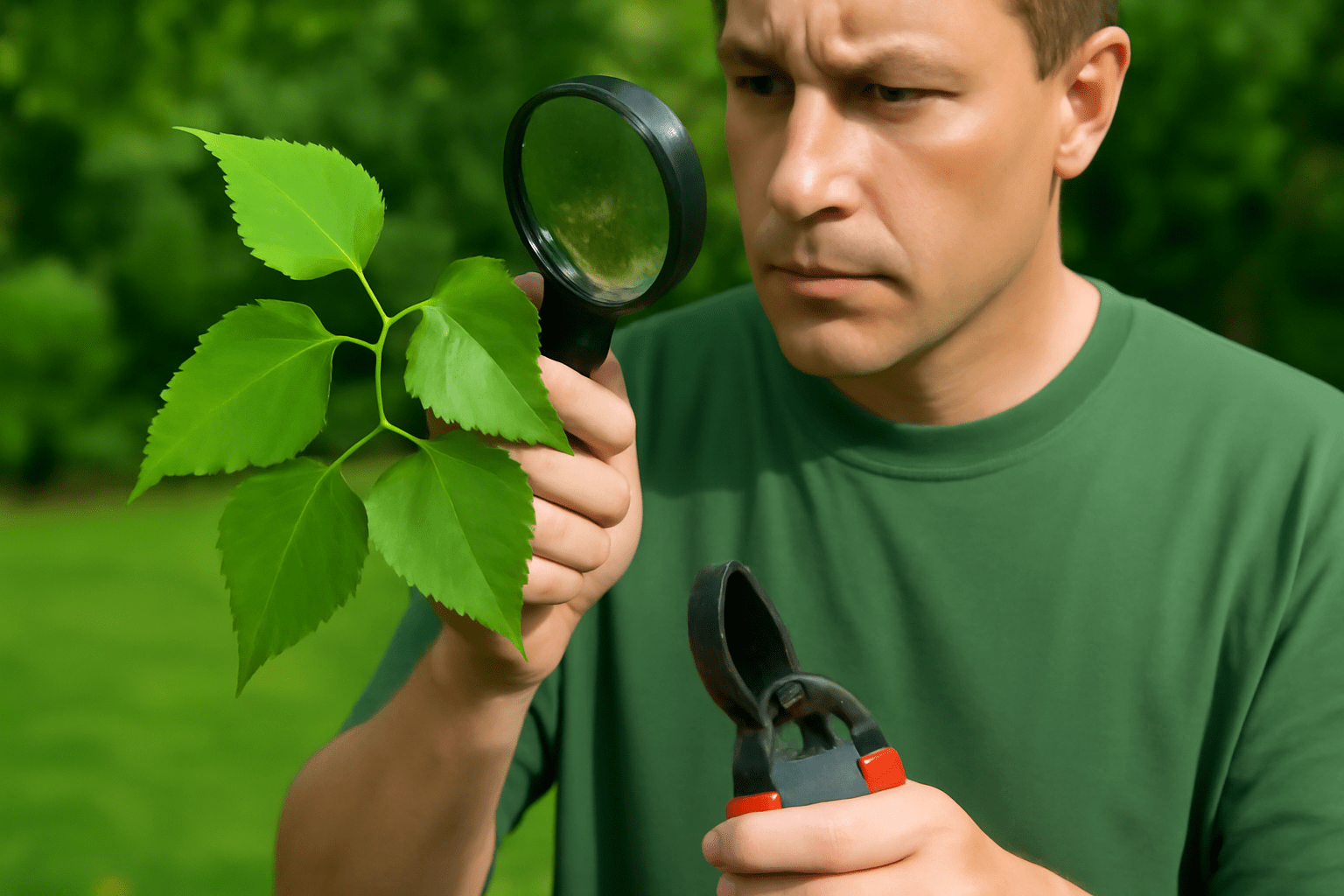
By keeping an eye on your birch tree’s leaves and following these simple tips, you can ensure that your tree remains healthy and vibrant for years to come!
Common Problems with Leaves on Birch Trees 
Birch trees are beautiful, but their leaves can face a variety of issues that may affect their health. Here’s a look at the most common leaf problems and how to address them effectively:
1. Yellowing Leaves (Chlorosis) 
One of the most frequent issues birch tree owners face is yellowing leaves. This is often due to a lack of nutrients, particularly nitrogen, or poor soil drainage.
Solution:
- Ensure your birch tree is in well-drained soil.
- Consider using a balanced fertilizer rich in nitrogen to boost leaf health.
- If soil drainage is an issue, try aerating the soil around the tree to allow better root access to nutrients.

2. Leaf Spot Diseases 
Brown, yellow, or black spots on the leaves could indicate fungal diseases like Septoria or Anthracnose. These diseases typically thrive in humid, wet conditions.
Solution:
- Remove infected leaves to reduce the spread of the disease.
- Use fungicides recommended for birch trees if the issue persists.
- Avoid overhead watering, as moisture on leaves can encourage fungal growth.
3. Curling Leaves 
Curling or distorted leaves can be a sign of pest problems, like aphids or birch leaf miners. These pests suck sap from the leaves, causing them to curl and turn brown.
Solution:
- Inspect the underside of leaves for pests.
- If aphids are present, spray the tree with a mild insecticidal soap or neem oil.
- For birch leaf miners, prune out infected leaves and remove them from the area to prevent reinfestation.
4. Early Leaf Drop 
If your birch tree drops leaves early, it could be a sign of stress caused by drought, overwatering, or root damage. It’s a natural response to conserve energy.
Solution:
- Ensure the tree receives adequate water, especially during dry spells, but avoid overwatering.
- Mulch around the base of the tree to help retain moisture in the soil.
- Check for any signs of root damage, like compacted soil or poor growth.
5. Powdery Mildew 
Powdery mildew can coat the leaves with a white, powdery substance, weakening the tree and reducing its ability to photosynthesize.
Solution:
- Prune affected branches and leaves to improve air circulation.
- Apply fungicide to the tree early in the season to prevent the mildew from taking hold.
- Consider planting your birch tree in a sunnier location to reduce moisture buildup.
6. Excessive Leaf Dropping in Fall 
While it’s normal for birch trees to shed their leaves in the fall, excessive or premature leaf drop can indicate environmental stress, such as extreme temperatures or a nutrient deficiency.
Solution:
- Ensure the tree is properly fertilized and watered throughout the growing season.
- If premature fall leaf drop continues, consult a professional to check for any underlying health issues.
Conclusion
By identifying and addressing these common leaf problems, you can keep your birch tree healthy and thriving for years to come. Regular observation and proper care will prevent many issues from becoming serious, ensuring your tree remains a stunning part of your landscape.
How to Care for Birch Tree Leaves to Promote Healthy Growth
Birch trees are known for their striking white bark and delicate, heart-shaped leaves. To keep your birch tree healthy and thriving, it’s essential to care for its leaves properly. Here’s a simple guide to help you ensure your birch tree grows strong and beautiful:
1. Ensure Proper Watering 
Birch trees need consistent moisture, especially during dry spells. Water your tree deeply at the base, ensuring the soil stays moist but not soggy. Deep watering encourages strong root growth, which directly benefits the leaves. Avoid shallow watering, as it doesn’t penetrate the soil enough for the roots to absorb.
2. Keep the Soil Well-Drained 
Birch trees prefer slightly acidic, well-draining soil. If your soil tends to retain too much water, consider adding organic matter like compost to improve drainage. Standing water around the roots can lead to leaf yellowing or fungal infections, so good drainage is key.
3. Prune Regularly 
Trim away any dead or damaged branches to help promote healthy leaf growth. Regular pruning also allows for better air circulation, which can reduce the risk of fungal diseases that can affect the leaves. Make sure to prune during the dormant season (late fall or early spring) to minimize stress on the tree.
4. Fertilize Wisely 
Fertilizing birch trees isn’t always necessary, but if your tree’s leaves appear pale or yellowing, it could be a sign of nutrient deficiency. Use a balanced, slow-release fertilizer with a ratio like 10-10-10 (N-P-K) to provide a steady supply of nutrients. Apply it in early spring before new growth starts to appear.
5. Monitor for Pests and Diseases 
Birch trees are susceptible to a range of pests and diseases that can damage their leaves. Keep an eye out for aphids, birch borers, and leaf spot diseases. Early detection and treatment can prevent major issues. If you notice any pests or abnormal spots on the leaves, consult your local garden center for natural pest control options.
6. Mulch Around the Base 
Adding mulch around the base of the tree can help retain moisture, suppress weeds, and regulate soil temperature. However, make sure not to pile the mulch directly against the trunk, as this can cause rot. Keep the mulch a few inches away from the bark to encourage healthy growth.
7. Provide Adequate Sunlight 
Birch trees thrive in full sun to partial shade. Ensure your tree receives enough light for the leaves to photosynthesize effectively. If your birch tree is planted in a shaded area, it may have fewer leaves or smaller leaves. A sunny spot will help your tree produce more vibrant foliage.
8. Protect Against Winter Damage 
Birch trees can be vulnerable to winter winds and snow, which may cause leaf damage or stress. To prevent this, you can wrap your tree with burlap during the winter months to protect the branches and leaves. This extra care can help maintain the tree’s health throughout the cold season.
9. Check for Yellowing Leaves 
Yellowing leaves may indicate nutrient deficiencies, too much water, or a pest problem. First, check the watering schedule and ensure the tree is not sitting in waterlogged soil. If the yellowing persists, inspect the tree for pests like aphids or check if the soil is lacking essential nutrients.
Final Thoughts 
Caring for birch tree leaves isn’t difficult, but it requires attention and consistency. By ensuring proper watering, soil drainage, and pest management, your birch tree will reward you with beautiful, healthy leaves year after year.
By following these simple steps, you’ll help your birch tree thrive and add stunning beauty to your landscape!
Troubleshooting Birch Tree Leaf Issues 
If you’ve noticed issues with your birch tree’s leaves, don’t worry! Birch trees are generally hardy, but they can sometimes suffer from specific leaf problems. Below are some common leaf issues and simple solutions to help restore your tree to health.
1. Yellowing Leaves (Chlorosis) 
Yellowing leaves often signal a nutrient deficiency, particularly a lack of nitrogen, iron, or magnesium. This can happen due to poor soil drainage, compacted soil, or too much water.
What to do:
- Soil test: Check your soil’s pH and nutrient levels. A soil test kit can help you determine deficiencies.
- Fertilize: Use a balanced fertilizer or one with micronutrients, especially those containing iron.
- Improve drainage: Ensure the soil around your tree drains well and isn’t too wet.
2. Brown, Crispy Edges 
When the edges of your birch tree’s leaves turn brown and crispy, it’s often a sign of environmental stress. This could be from extreme heat, wind, or drought conditions.
What to do:
- Watering: Keep the soil consistently moist, especially during hot summer months. Deep watering is better than frequent shallow watering.
- Mulching: Apply mulch around the base of the tree to retain moisture and protect roots from heat.
- Shade: If possible, provide some afternoon shade to protect the tree from extreme heat.
3. Leaf Spot Diseases 
Brown or black spots with yellow halos can indicate a fungal infection, such as leaf spot disease. This is common in birch trees during the wet seasons.
What to do:
- Remove infected leaves: Rake up fallen leaves to prevent the spread of the fungus.
- Prune: Trim dead or infected branches to improve airflow and reduce humidity around the tree.
- Fungicide treatment: Consider applying a fungicide, but only when necessary, and follow the instructions carefully.
4. Curling Leaves 
When birch leaves curl, it could be due to pests like aphids or a fungal infection. Curling often happens in response to a disturbance in the leaf’s natural processes.
What to do:
- Inspect for pests: Check the undersides of leaves for small, soft-bodied insects like aphids. If you find any, treat with an insecticidal soap or neem oil.
- Improve tree health: A healthy tree can better withstand pests, so ensure your birch is well-watered and properly fertilized.
5. Early Leaf Drop 
If your birch tree drops its leaves prematurely, this could be a sign of root problems, stress from pollution, or pests like borers.
What to do:
- Examine the trunk: Check for signs of insect activity or damage, especially around the base of the tree.
- Watering and soil: Make sure the tree isn’t stressed by inconsistent watering. A healthy root system is crucial for leaf retention.
- Consider professional help: If the issue persists, consult an arborist to check for root or pest damage.
6. Mildew or Powdery Coating 
A white, powdery coating on the leaves can be caused by powdery mildew, a fungal issue that thrives in humid conditions.
What to do:
- Prune affected leaves: Remove any leaves with mildew to limit its spread.
- Increase airflow: Prune branches to allow better airflow, which reduces humidity around the tree.
- Use fungicide: A fungicide spray can help prevent and treat powdery mildew.
By identifying and addressing these common issues, you can keep your birch tree’s leaves healthy and vibrant. Remember, regular observation and early intervention are key to managing leaf problems!
Preventative Tips for Long-Term Birch Tree Health 
Birch trees are beautiful additions to any landscape, but like any plant, they need proper care to thrive. By taking proactive steps, you can ensure your birch tree remains healthy for years to come. Here are some practical, expert-approved tips to keep your birch tree in top shape:
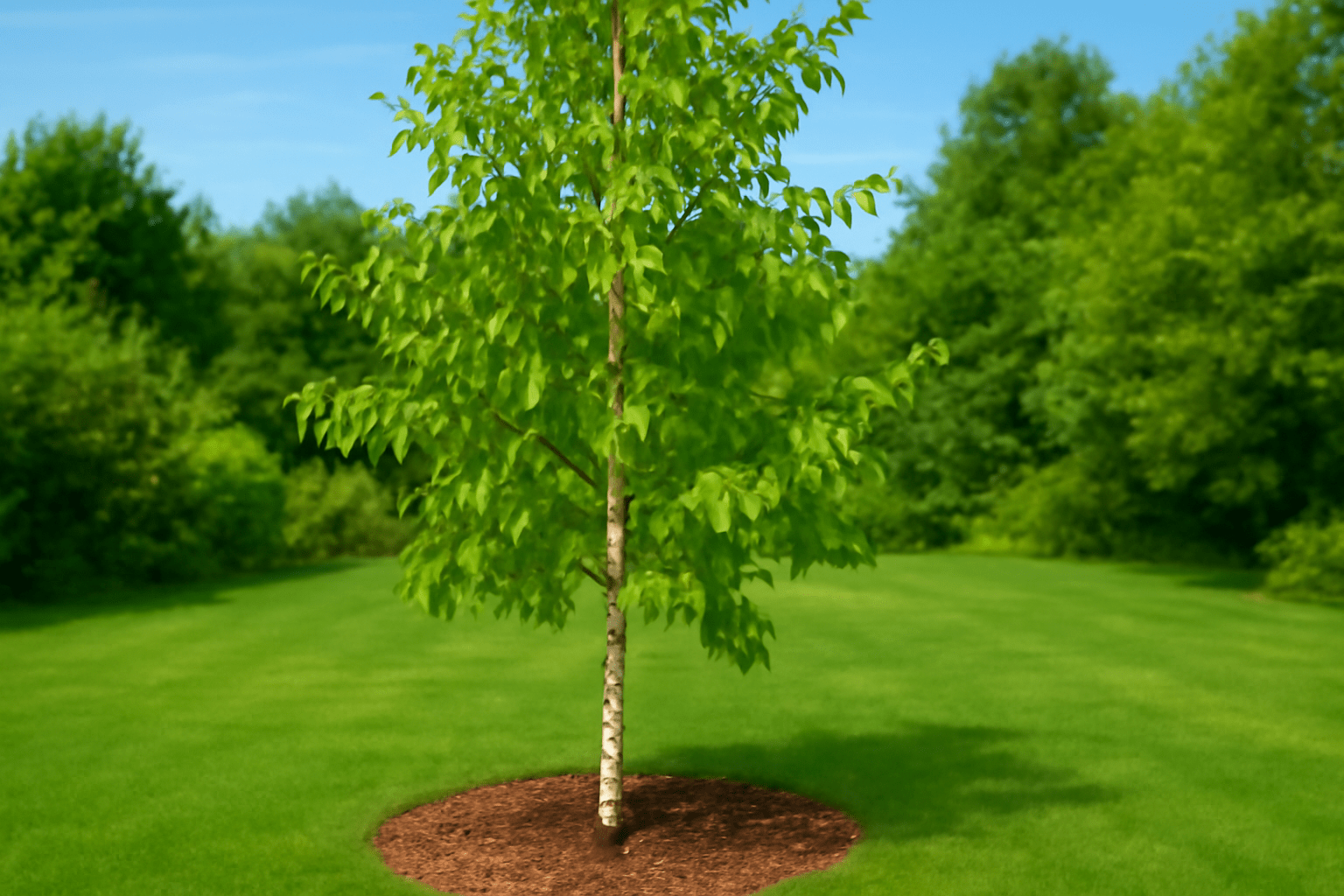
1. Choose the Right Location 
Birch trees prefer full sun and well-drained soil. When planting, make sure you select a spot with adequate sunlight. Avoid areas where water tends to pool after rain, as soggy soil can lead to root rot.
2. Water Regularly (But Not Too Much!) 
Birch trees love moisture, but overwatering can harm them. Water your tree deeply once a week, especially during dry spells, but make sure the soil drains well. If the soil remains too wet, it can lead to fungal infections and root issues.
3. Mulch to Retain Moisture and Prevent Weeds 
A layer of organic mulch around the base of your birch tree helps retain moisture, keeps the roots cool, and prevents weeds from competing for nutrients. Keep the mulch about 2-3 inches thick and avoid piling it directly against the trunk.
4. Prune Regularly 
Pruning is key to the overall health of your birch tree. Remove dead or damaged branches to prevent disease spread. Be sure to prune during late winter or early spring when the tree is dormant. Avoid heavy pruning, as this can stress the tree.
5. Protect from Pests 
Birch trees are vulnerable to pests like the bronze birch borer and aphids. To prevent infestations, keep an eye out for signs of pests, such as yellowing leaves or visible holes. Consider using organic insecticides or neem oil to control pests without harming the environment.
6. Fertilize with Care 
Fertilizing your birch tree with the right nutrients helps promote healthy growth. However, avoid over-fertilizing, as it can lead to weak branches. Use a balanced fertilizer designed for trees and apply it in the spring before new growth begins.
7. Monitor for Signs of Disease 
Common birch tree diseases, such as birch leaf spot or cankers, can impact the health of your tree. Keep an eye out for discolored, curled, or dropped leaves. If you notice any signs of disease, remove affected leaves and branches promptly and consider consulting an arborist.
8. Protect from Extreme Weather 
Birch trees can be sensitive to extreme weather conditions. In winter, wrap the trunk with burlap to prevent frost cracks. During summer heatwaves, ensure your tree gets enough water, especially if temperatures soar above 90°F (32°C).
By following these easy steps, you can help your birch tree grow strong and healthy for many seasons to come. Consistent care and early intervention are key to preventing common issues and keeping your tree vibrant year after year.
This section offers actionable and easy-to-implement tips that can make a significant difference in the long-term health of birch trees, ensuring they thrive and continue to enhance your landscape.
Conclusion
Caring for your birch tree doesn’t have to be complicated! By following the simple steps outlined above, you can enjoy a beautiful, healthy tree for many years to come. Regular watering, careful pruning, pest control, and disease prevention are all essential in keeping your tree strong and vibrant.

Remember, the key to a thriving birch tree is consistency—taking the time to check on your tree and address any issues early can save you time, effort, and potential damage down the road. With a little attention and care, your birch tree will flourish and continue to bring beauty to your garden or landscape.
By investing in the health of your tree today, you’re setting it up for a bright and healthy future!
This conclusion wraps up the article with a friendly, optimistic tone, encouraging readers to take action and reinforcing the importance of long-term care for their birch trees.
Frequently Asked Questions(FAQ)
How do I know if my birch tree’s leaves are healthy?
Healthy birch tree leaves should be vibrant green, without any yellowing, curling, or spotting. If you notice discolored or wilting leaves, it could indicate pests, disease, or improper care. Regularly inspect the leaves for signs of damage to catch any issues early.
Why are my birch tree leaves turning yellow?
Yellowing birch leaves can be a sign of several issues, including nutrient deficiencies, overwatering, or pest infestations. Check the soil drainage and water levels, and look for pests like aphids or bronze birch borers. You may also need to fertilize if your tree lacks essential nutrients.
What causes holes in the leaves of my birch tree?
Holes in birch tree leaves are often caused by pests like the bronze birch borer or caterpillars. Inspect the tree for visible insects or larvae. If pests are present, you may need to treat with an insecticide or neem oil to protect the tree.
How can I protect my birch tree from diseases?
To prevent diseases like birch leaf spot or cankers, ensure your tree is planted in well-drained soil and receives adequate sunlight. Regular pruning of dead branches and removing fallen leaves in the autumn can help prevent the spread of disease.
Why are my birch tree leaves falling off early?
Early leaf drop can be caused by stress factors such as drought, pest damage, or fungal infections. If your tree is stressed by lack of water or pests, provide proper care by watering deeply and removing any infected areas. Stress relief will help the tree recover and produce healthy leaves next season.
How often should I water my birch tree?
Birch trees prefer moist soil but dislike standing water. Water your tree deeply once a week, especially during dry periods, to keep the soil evenly moist. Avoid overwatering, as this can lead to root rot and other health issues.
How do I fertilize my birch tree?
Fertilize your birch tree in early spring with a balanced, slow-release fertilizer. Make sure the fertilizer is designed for trees and shrubs to avoid overfeeding. Avoid fertilizing in late summer or fall, as this can encourage weak growth that may not survive the winter.
What should I do if my birch tree’s leaves are covered in spots?
Spots on birch tree leaves are often a sign of fungal infections like birch leaf spot. To treat, remove affected leaves and avoid overhead watering to reduce humidity around the tree. Applying a fungicide in early spring can help prevent future outbreaks.

